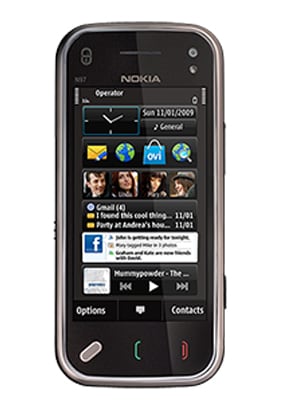
Nokia: Itís Not Over Yet Ö
Although there is surge of smartphones in the mobile handset market and Nokia is making efforts compete in the space
"At the highest level, what I have initially found is a company with many great strengths and a history of achievements that are second to none in the industry. And yet our company faces a remarkably disruptive time in the industry, with recent results demonstrating that we must re-assess our role in and our approach to this industry.” These words by Stephen Elop, the newly appointed CEO of Nokia, sent out a message loud and clear that Nokia needs a facelift for its business strategy to prevent its dwindling market share. In reality, Nokia needs much more than a new CEO. The company needs a complete renovation of its business model that addresses Nokia’s failure to react to dynamic market trends.
The launch of iPhone in 2007 had completely changed the face of the mobile phone industry and Nokia has been losing its grip on the market ever since. The feature rich Nokia N97 saw a sales figure of 500,000 phones in the first quarter of its launch as compared to Apple iPhone’s phenomenal sales of 1,000,000 phones in the first week. Also, the recently launched product from Nokia in the N-series, the N8, has been overshadowed by the demand for Apple’s iPhone 4, according to reports from financial company Morgan Stanley.
A recent survey of 150 smartphone retailers revealed that the Apple‘s iPhone is outselling Nokia‘s 12 megapixel powerhouse, six to one in Europe. Morgan Stanley analyst, Patrick Standaert says: “The N8 scores highly on most key handset features except applications. However, with more than 400,000 developers on Qt and three million downloads a day, Nokia is showing some encouraging improvements on this front.”
Still, it seems like Nokia has a lot of catching up to do in order to sustain in the ever increasing competitive mobile industry. So the evident question that stands out is where or why is Nokia lagging behind? The low satisfaction level index clearly illustrates that Nokia has been unable to meet the satisfaction levels of its customers who use smartphones.
Nokia manufactures distinct products for the smartphone user segment. The ‘N’ series caters to the Entertainment users while ‘E’ series targets the communication user segment. Internet usage is a common aspect for both entertainment and communication users. Entertainment users are more likely to use internet to download applications and games, music, and to connect to social networking sites. On the other hand, communication users prefer services to access e-mails, video conferencing and instant messaging. Internet is critical for both the users. In comparison with its competitors, the statistical data for internet usage on Nokia smartphone handsets is substantially low.






